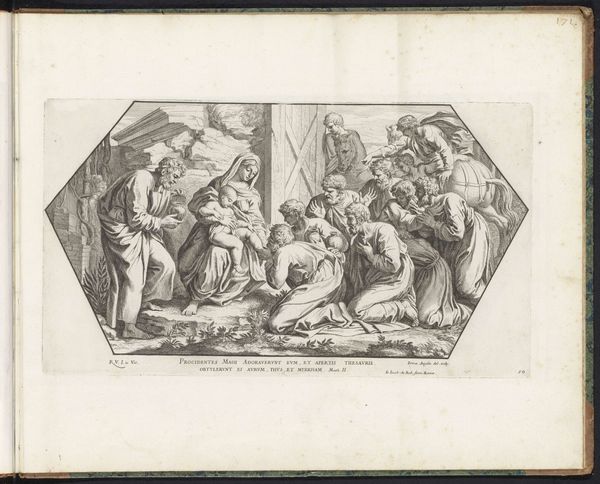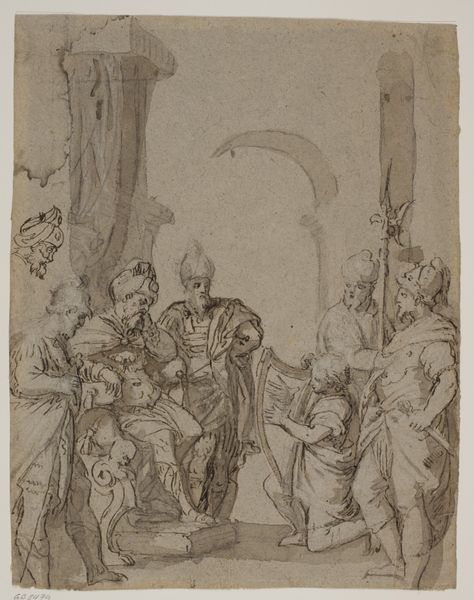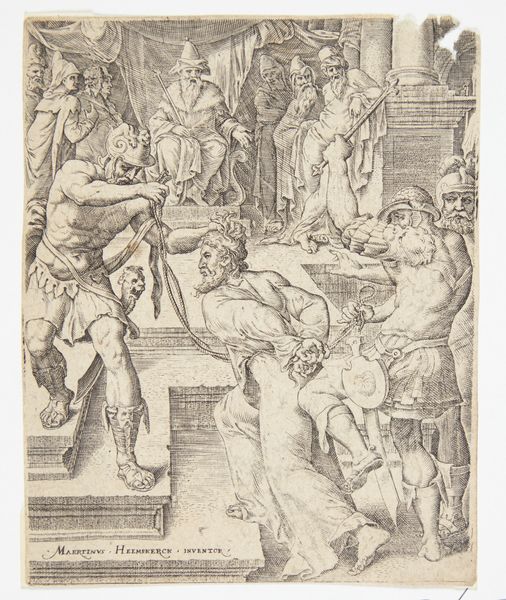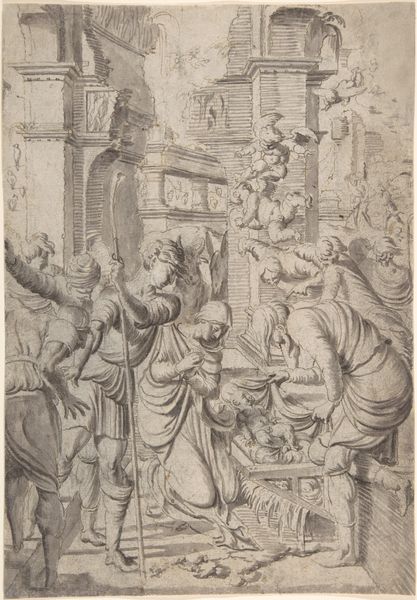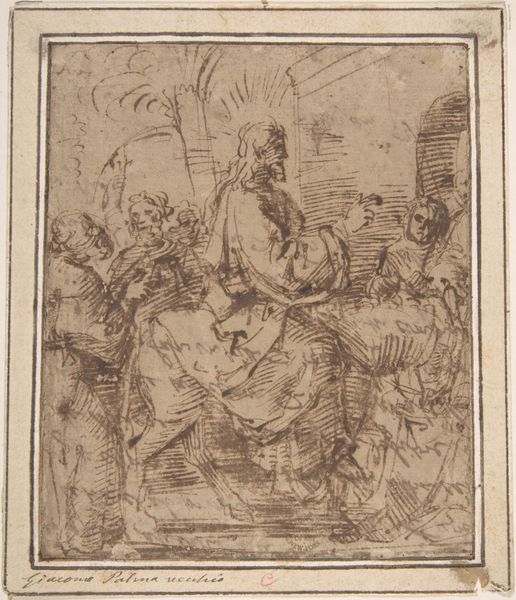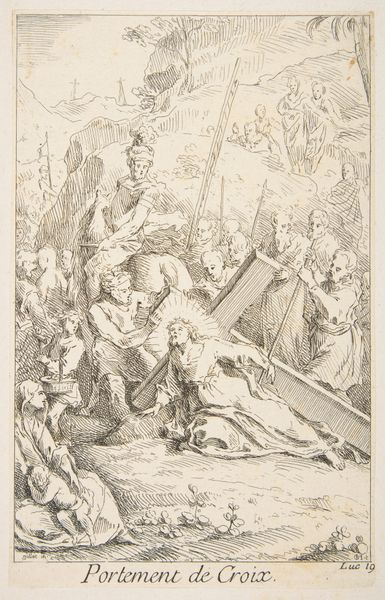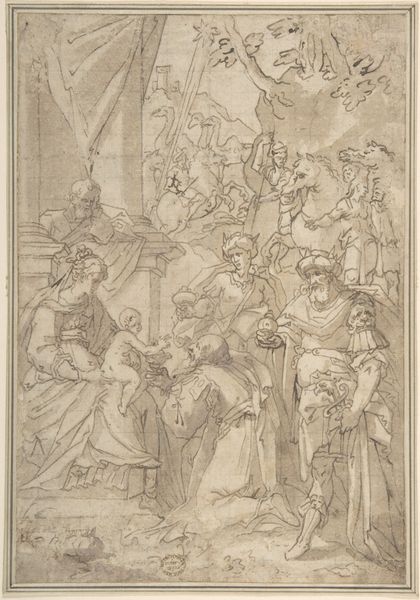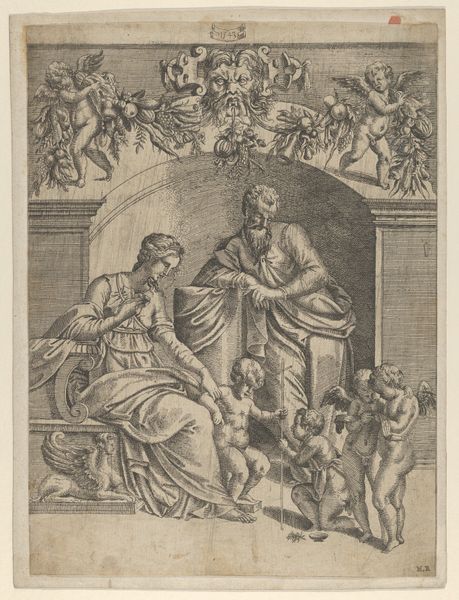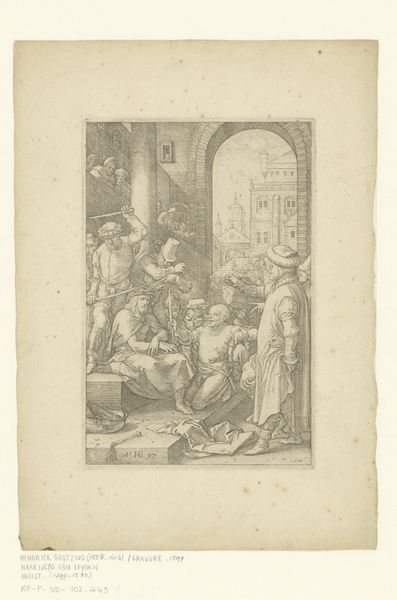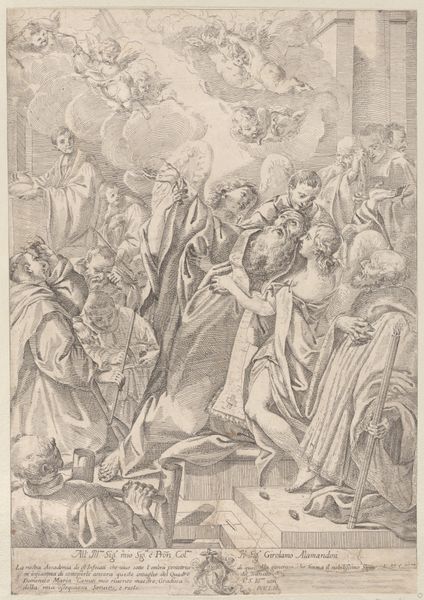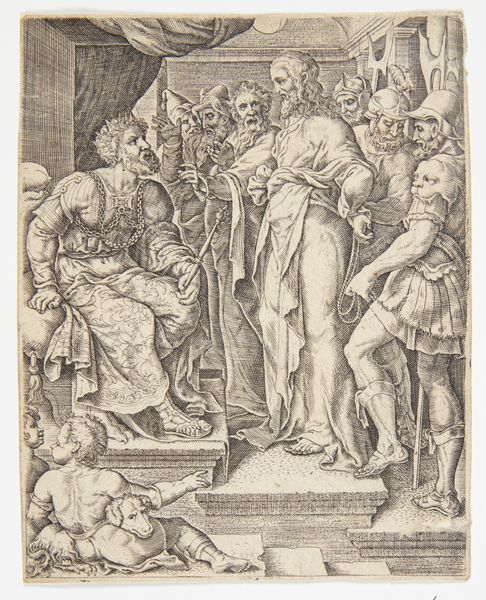
drawing, ink, pen
#
portrait
#
drawing
#
baroque
#
pen sketch
#
figuration
#
ink
#
pen
#
history-painting
Dimensions: width 48 mm, height 69 mm
Copyright: Rijks Museum: Open Domain
Curator: The expressive ink drawing before us, likely from the period 1590 to 1650, is titled "Tronende Maria en het kind omringd door heiligen," attributed to Antoine Sallaert. It’s executed in pen and ink, a quick yet detailed sketch. Editor: My first impression is one of contained drama, even agitation. The density of the linework, particularly around the figures, conveys a sense of barely-controlled energy. There's a definite contrast in weight too—thin washes against areas of sharp, etched intensity. Curator: It’s interesting to note how the choice of medium, pen and ink, lends itself to rapid execution. Sallaert would have likely created numerous sketches like this, experimenting with composition, perhaps as studies for larger works in painting or print. Editor: Precisely! Look at the angel holding a skull and sword. The juxtaposition is heavy with symbolism, a *memento mori* right there, reminding us of life's transience, contrasted with the sword, representing power and judgement. What does this suggest about salvation to those witnessing the scene at the lower registers? Curator: Beyond the theological narrative, there's the sheer labor involved in creating such detail with relatively simple tools. The hierarchy suggested through careful organization, is also compelling, no? Consider, what did accessing fine writing utensils like a quality pen, require then? Editor: Absolutely. The symbolism in baroque art often served didactic purposes. Note the raised gestures of supplication of the figures in the lower registers—appealing for intercession to the Virgin and Child who are centrally positioned and elevated on a sort of stage or throne. This image speaks volumes about accessing power. The Virgin becomes an interlocutor between earthly need and divine favor. Curator: A crucial element to explore is who was buying or commissioning art. Patronage was intrinsically bound up within class and what one could consume within their household. Also, ink and pen were the raw components to the work. I wonder, where were these sourced, and by whom? What types of labor enabled the development of a pen sketch like this? Editor: I hadn’t quite considered it from that angle, fascinating. In viewing the artwork it can remind us that beyond aesthetics lies complex layers of production and symbolic representation—offering avenues of interpretation that enrich our appreciation of historical narratives through artistic craftsmanship and theological frameworks.
Comments
No comments
Be the first to comment and join the conversation on the ultimate creative platform.
